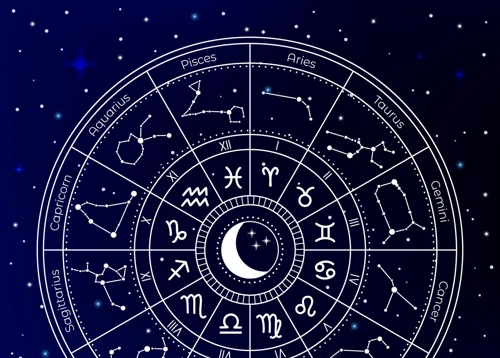The History and Origins of Astrological Symbols: Throughout the ages, humans have looked to the stars for guidance and meaning. The study of astrology, with its emphasis on celestial movements, has played a significant role in many civilizations and cultures. In this article, we delve into the fascinating history and origins of astrological symbols, exploring ancient astronomical observations, the development of symbol systems in different civilizations, and the evolution of astrological interpretations over time. Join us on this journey as we uncover the rich tapestry of astrological symbolism and its enduring significance in our world.
Ancient Astronomical Observations

In ancient times, civilizations around the world made profound astronomical observations that laid the foundation for astrology as we know it today. The ancient Egyptians, Mesopotamians, and Greeks were among the first to study the stars and develop astrological systems. These early astronomers noticed patterns in the celestial bodies and their movements, correlating them with various earthly events and phenomena. The Egyptians, for example, closely observed the annual flooding of the Nile River, which they believed was influenced by the movements of certain stars and constellations. Similarly, the Mesopotamians developed a system of celestial divination, linking planetary positions to the outcomes of wars, harvests, and other significant events. These ancient observations formed the basis for the development of astrological symbols that represented the celestial bodies and their attributes. The use of symbols allowed for easier recording and interpretation of celestial events and their impact on human lives. These symbols, still used in astrology today, hold centuries of wisdom and carry the hidden messages and energies believed to influence our lives and destinies.
Early Astrological Systems
Early astrological systems emerged in various ancient civilizations and played a crucial role in understanding the connection between celestial movements and human affairs. These systems were intricately developed by societies such as the Babylonians, Egyptians, and Chinese, who sought to unlock the mysteries of the cosmos. The Babylonians, for instance, created expansive cuneiform tablets that recorded celestial omens and planetary positions, which were then interpreted to predict events and guide decision-making. Meanwhile, the Egyptians associated their pantheon of gods with celestial objects, attributing specific qualities and influences to each deity. The Chinese, on the other hand, developed a complex system where astrological symbols and concepts harmonized with their philosophical traditions such as Yin and Yang and the Five Elements. These early astrological systems laid the groundwork for future interpretations and symbolisms, influencing the understanding of astrological aspects, planetary symbols, and the hidden messages they convey.
The Influence of Mesopotamia
The ancient Mesopotamian civilization, known as the cradle of astrology, had a significant influence on the development of astrological symbols. Their extensive astronomical observations and practices were deeply linked to their religious and societal beliefs. Mesopotamian astrologers believed that the movements and positions of celestial bodies held great significance and could provide insights into the future and the will of the gods. They developed a complex system of divination known as “astrolatry,” which involved interpreting celestial omens for guidance. These observations and interpretations eventually led to the creation of a symbolic language to represent the planets and other celestial entities. The Mesopotamians assigned specific shapes and forms to each planet, later influencing the development of astrological symbols used in different cultures. For example, the symbol of the sun, a circle with a dot in the center, originated from the Mesopotamian representation of the sun god Shamash. This symbol continues to be used in astrology to represent the sun. The influence of Mesopotamia on astrological symbolism extended beyond the planetary symbols as well. They also developed a complex system of astrology based on planetary transits and aspects, which is still widely studied and practiced today. These aspects, such as conjunctions and oppositions, contribute to understanding the dynamics of planetary influences. The ancient Mesopotamians laid a solid foundation for astrological symbolism, which would later be expanded upon and developed by other civilizations as astrology spread across the globe.
Astrology in Ancient Egypt
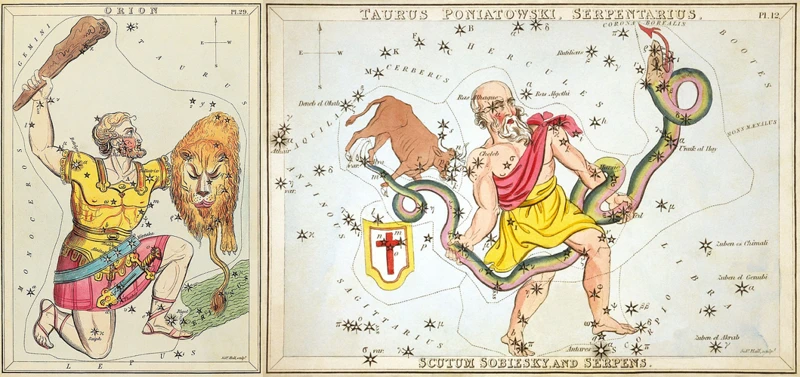
Astrology played a crucial role in the ancient Egyptian civilization, where the stars and celestial movements were deeply intertwined with their religious, cultural, and agricultural practices. The Egyptians believed that the gods and goddesses resided in the heavens and that their actions influenced the events on Earth. They developed a sophisticated system of astrology that centered around the alignment of the stars, planets, and constellations with specific gods and goddesses. The Egyptians observed the movements of celestial bodies meticulously and recorded them on temple walls and in papyrus scrolls. They associated different symbols with each celestial body, such as the sun, moon, and planets, giving them unique meanings and attributes. These symbols were often represented in artwork and appeared in hieroglyphics. The zodiac also had a significant role in Egyptian astrology, with each of the 12 signs linked to different deities and specific times of the year. The development of Egyptian astrological symbols and their connection to divine forces provided the Egyptians with a means to understand and navigate their world. Today, the symbolism and wisdom of ancient Egyptian astrology continue to captivate and inspire astrologers and enthusiasts alike.
Development of Egyptian Astrological Symbols
The development of Egyptian astrological symbols was deeply rooted in the culture and beliefs of ancient Egypt. Drawing inspiration from their observations of the stars and celestial phenomena, the Egyptians created a complex system of symbols to represent the planets, constellations, and other celestial bodies. These symbols were rich in meaning and often tied to mythology and religious beliefs. For instance, the symbol for the Sun, one of the most important celestial bodies in Egyptian astrology, was a circle with a dot in the center, representing the life-giving power of the Sun god, Ra. The symbol for the Moon, on the other hand, resembled a crescent shape, symbolizing the waxing and waning phases of the lunar cycle. These astrological symbols not only served as a means of recording celestial events but also conveyed hidden messages and energies believed to influence human lives. To delve deeper into the hidden meanings and influences of astrological symbols, you can explore the fascinating concept of hidden messages in astrological symbols.
The Role of the Zodiac in Egyptian Astrology
The role of the Zodiac in Egyptian astrology was a fundamental aspect of their belief system. The Egyptians divided the year into twelve months, each associated with a specific Zodiac sign. These signs were based on the constellations visible in the night sky during different times of the year. The Egyptians believed that each sign had unique qualities and characteristics that influenced individual personality traits and life events. They used these Zodiac signs as a guide for understanding and predicting various aspects of one’s life, including love, career, and personal growth. The 12 signs of the Egyptian Zodiac were Aries, Taurus, Gemini, Cancer, Leo, Virgo, Libra, Scorpio, Sagittarius, Capricorn, Aquarius, and Pisces. Each sign was associated with a particular deity, symbolizing different aspects of life and nature. For example, Aries was associated with the god Amun-Ra, symbolizing power and leadership, while Pisces represented the goddess Hathor, symbolizing creativity and intuition. The Egyptian Zodiac played a crucial role in their astrological system, providing a framework for understanding and interpreting the influences of the celestial bodies and their relationship to human existence. Its symbolism and teachings are still revered and explored in modern astrology practices and hold a wealth of wisdom for those who seek to understand the hidden powers of the cosmos.
Note: For more information about the symbolism of the planetary symbols in astrology, you can refer to the article on symbolism of planetary symbols.
The Significance of Ancient Greece
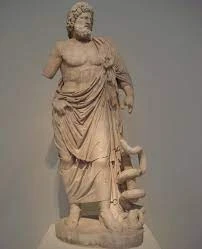
In the realm of astrology, ancient Greece holds immense significance. Greek mythology, with its rich pantheon of gods and goddesses, played an influential role in the development of astrological beliefs and symbolism. The Greeks associated each celestial body with a deity, attributing specific qualities, characteristics, and attributes to them. These associations gave birth to the concept of planetary rulerships, where each planet ruled over a particular zodiac sign and held sway over specific areas of human life. For instance, Zeus, the king of the gods, was connected to Jupiter, the largest planet in the solar system, symbolizing power, expansion, and abundance. Aphrodite, the goddess of love and beauty, was associated with Venus, representing relationships and aesthetics. The ancient Greeks also linked the zodiac signs with mythological figures, such as Aries with the ram and Leo with the lion. These associations between celestial bodies, gods, and symbols formed the basis of astrological interpretation and added layers of depth and meaning to the practice. The symbolism intertwined with Greek mythology continues to influence astrological analysis and understanding in the modern era. To explore the power of planetary transits and aspects, which are key components of astrological interpretation, check out our article “The Power of Transits and Aspects in Astrological Symbols.”
Astrology in Greek Mythology
Astrology in Greek mythology played a significant role in understanding celestial phenomena and its connection to human destiny. The ancient Greeks believed that the gods and goddesses controlled every aspect of life, including the movement of celestial bodies. They associated each deity with specific planets or celestial objects, attributing their qualities, energies, and influence to these heavenly bodies. For instance, Zeus, the king of gods, was associated with the planet Jupiter, symbolizing power and authority. Apollo, the god of the sun, represented vitality, creativity, and enlightenment. The Greek myths often depicted the interactions and relationships between these gods and their corresponding celestial entities, providing a rich tapestry of stories and symbolism that shaped the understanding of astrology. By studying these mythological connections, astrologers gained insights into the characteristics and influences of the planets, allowing for deeper interpretations of astrological charts and horoscopes.
Hellenistic Astrology and Symbol Systems
Hellenistic astrology, which flourished in Ancient Greece during the Hellenistic period (323-31 BCE), further developed the astrological symbol systems inherited from earlier civilizations. It was during this time that astrologers began assigning specific planetary rulerships to the twelve signs of the zodiac, creating a more comprehensive system of interpretation. These astrologers also expanded the use of astrological symbols to represent the various celestial bodies and their attributes. Notably, the Greek god Hermes played a significant role in the development of these symbols. For example, the symbol for the planet Mercury is derived from the caduceus, a staff carried by Hermes. Hellenistic astrology introduced further complexities to symbol systems, such as the use of terms like domicile, exaltation, and detriment to determine the strength or weakness of a planet in a particular zodiac sign. These advancements laid the groundwork for the symbolic language of astrology that continues to be used today. Understanding the symbolism of these astrological symbols and their associations is crucial in accurately interpreting astrological charts and gaining insights into one’s character, destiny, and life events.
Rise of Medieval Astrology
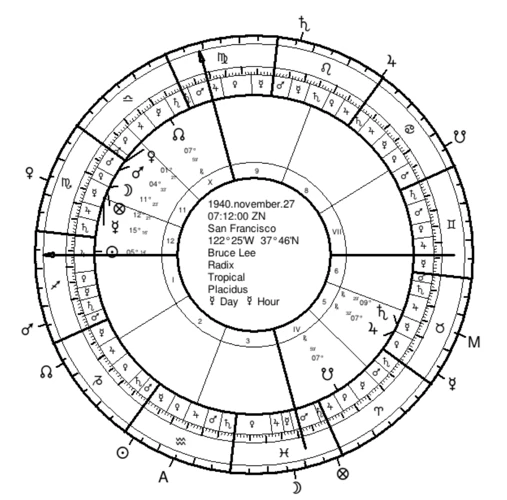
During the medieval period, astrology experienced a significant rise in popularity and influence across Europe and the Islamic world. This era saw the merging of astrology with various other disciplines, including alchemy and astronomy. Arabic scholars made notable contributions to the development of astrology during this time, translating earlier Greek and Persian texts into Arabic and adding their own interpretations and enhancements to the symbolic system. These contributions included the introduction of new planetary symbols such as those for Saturn, Jupiter, Mars, the Sun, Venus, Mercury, and the Moon. These symbols, derived from the names and attributes of the corresponding celestial bodies, added depth and complexity to astrological interpretations. Additionally, the influence of alchemy on astrology led to the incorporation of alchemical symbols and concepts, further enriching the symbolism associated with astrological practices. The medieval period witnessed a remarkable fusion of ideas and symbol systems, setting the stage for the future development and evolution of astrology.
Arabic Contributions and Symbolic Enhancements
Arabic contributions to astrology played a crucial role in the development and enhancement of astrological symbols. During the Golden Age of Islam, scholars in the Islamic world made significant advancements in the fields of mathematics, astronomy, and astrology. They built upon the knowledge of earlier civilizations, translating and preserving ancient Greek texts. Arab astronomers such as Al-Kindi and Al-Farabi expanded the understanding of celestial movements and their influence on human affairs. These scholars introduced new ideas and concepts, including the use of planetary aspects and transits to predict future events. They also enhanced the symbolic language of astrology by assigning additional meanings and interpretations to the astrological symbols. For example, they associated the seven classical planets with specific metals and gemstones, attributing symbolic and metaphysical properties to each. Arabic astrologers also contributed to the development of more intricate and complex astrological charts, incorporating various geometric patterns and techniques. Through their ingenuity and contributions, the Arabic scholars left an indelible mark on the field of astrology, enriching the symbolic language and deepening our understanding of the celestial forces at play in our lives.
The Influence of Alchemy on Astrological Symbols
Alchemy, a mystical and philosophical practice, played a significant role in shaping astrological symbols during the medieval period. The alchemists believed in the transformation of matter and the search for the philosopher’s stone, which they believed could transmute base metals into gold. These alchemical beliefs influenced the symbolism and interpretations of astrological symbols. Alchemical symbols, such as the sun and moon, were incorporated into astrological charts and played a vital role in understanding the influence of celestial bodies on human life. The sun symbolized the divine essence and represented the core individuality and life force within a person, while the moon symbolized the receptive and nurturing aspects. The alchemists also assigned symbolic attributes to the planets, linking them to their alchemical counterparts. For example, Mercury represented mercury, the metal associated with intelligence and communication, while Venus was associated with copper, representing love and beauty. These alchemical influences added depth and complexity to astrological symbols, infusing them with spiritual and transformative connotations. Understanding the influence of alchemy is crucial in comprehending the symbolism and hidden meanings within astrological charts and interpretations.
Astrology in Renaissance Europe
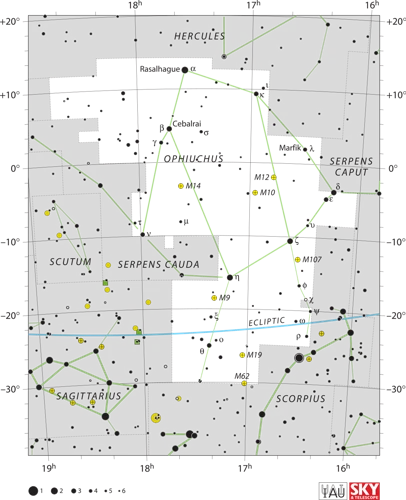
Astrology experienced a resurgence during the Renaissance period in Europe, as scholars and intellectuals drew inspiration from ancient texts and sought to revive the study of celestial influence on human affairs. During this time, astrology became intertwined with various disciplines such as art, literature, and alchemy, leading to a rich tapestry of symbolic interpretations. Renaissance art, for example, often depicted astrological symbols and celestial bodies in paintings, reflecting the belief in their significance and influence. Symbolism played a crucial role in astrology during this period, with each planet having its own distinct symbol, derived from ancient Greek and Roman mythology. These symbols, including the Sun, Moon, and the seven traditional planets, are still widely recognized and used in astrology today. The Renaissance saw the introduction of new planetary symbols, such as Uranus and Neptune, as astronomers discovered and documented new celestial bodies. This era marked a pivotal point in the evolution of astrological symbolism, as it embraced the integration of various disciplines and expanded the repertoire of planetary symbols. The study and interpretation of astrological symbols during the Renaissance laid the groundwork for the modern understanding and practice of astrology, making it a crucial period in the history of this ancient art.
The Impact of Renaissance Art and Symbolism
During the Renaissance period in Europe, art and symbolism played a pivotal role in shaping astrological beliefs and practices. Renaissance artists, such as Leonardo da Vinci and Albrecht Dürer, embraced astrology as a source of inspiration and incorporated astrological symbols into their artwork. The visual representation of celestial bodies and zodiac signs in paintings and sculptures not only added depth and complexity to the artwork but also popularized the use of astrological symbols among the general public. Symbolism, a key characteristic of Renaissance art, provided a means to convey deeper meanings and evoke emotional responses. Astrological symbols became intertwined with the symbolism used in art, creating a rich tapestry of hidden messages and mystical connections. This fusion of art and astrology during the Renaissance period not only enriched cultural expression but also contributed to the continued significance and understanding of astrological symbols in contemporary astrology.
The Introduction of New Planetary Symbols
In the realm of astrology, the introduction of new planetary symbols marked a significant shift in the understanding of celestial influences. During the Renaissance period in Europe, there was a renewed interest in astrology and a desire to expand the existing system of symbols. Artists and philosophers of the time sought to create representations of the planets that not only captured their astronomical characteristics but also held deeper symbolic meaning. This led to the development of unique glyphs or symbols for each planet that encapsulated their astrological attributes. For instance, the symbol for Venus, the planet associated with love and beauty, took the form of a circle with a cross below, representing the blending of earthly and spiritual energies. The symbol for Uranus, discovered much later, features a combination of the male and female symbols, reflecting the planet’s association with radical change and innovation. These newly introduced planetary symbols injected a fresh layer of symbolism and visual representation into astrological interpretations, providing practitioners with additional tools for understanding and representing the influences of the celestial bodies. Today, these symbols continue to be widely used and recognized, serving as a visual language that connects astrology enthusiasts across cultures and generations.
Modern Astrological Systems
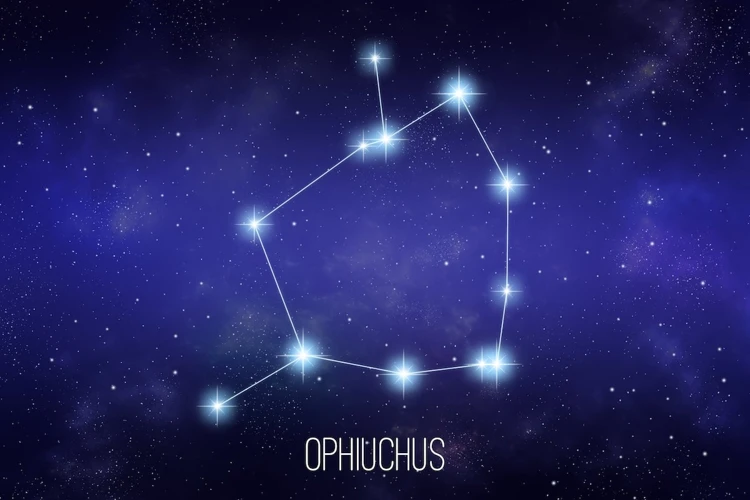
Modern astrological systems have evolved and undergone significant changes over the centuries. One notable development in modern astrology was the standardization of astrological symbols. In the late 19th and early 20th centuries, astrologers began to establish a uniform set of symbols to represent the planets, zodiac signs, and other astrological factors. This standardization brought consistency and ease of communication among astrologers worldwide.
The role of technology has also played a crucial role in the development of modern astrological systems. With the advent of computers and the internet, astrologers gained access to advanced software and online resources that revolutionized the way they practice and interpret astrology. The use of computers enabled astrologers to generate birth charts and calculate intricate astrological calculations more efficiently.
Technological advancements allowed for the creation of new astrological symbols. For instance, the discovery of additional celestial bodies beyond the traditional seven planets led to the integration of new symbols into astrological charts and interpretations. Planets like Uranus, Neptune, and Pluto were assigned unique symbols to represent their energies and influences.
Modern astrology has also witnessed the emergence of multicultural perspectives and the incorporation of symbols from different traditions. As astrology gained popularity worldwide, astrologers started incorporating symbols and techniques from various cultures and belief systems, enriching the practice with diverse perspectives and interpretations.
Modern astrological systems continue to evolve, adapting to the changing times and incorporating new knowledge and insights. The combination of standardization, technological advancements, multicultural influences, and continuous exploration ensures that astrology remains a dynamic and relevant practice for understanding ourselves and our place in the cosmos.
Standardization of Astrological Symbols
Standardization of astrological symbols has been a crucial aspect in the development and progression of astrology. Over time, various civilizations and cultures established their own set of symbols to represent the planets, zodiac signs, and other astrological components. However, it was during the Renaissance period that a concerted effort was made to standardize these symbols for better communication and understanding among astrologers and enthusiasts. The introduction of printing technology played a significant role in this standardization process, as it allowed for the mass production and dissemination of astrological texts. Astrologers like Johannes Kepler and Galileo Galilei contributed to this standardization by defining consistent symbols for the planets based on their astronomical observations. This standardization not only made astrology more accessible but also facilitated cross-cultural and cross-linguistic exchanges, ensuring that astrological symbolism transcended regional boundaries and became a universal language of interpretation and communication.
The Role of Technology in Symbol Development
Technological advancements have played a significant role in the development and evolution of astrological symbols. With the advent of printing presses in the fifteenth century, astrologers gained the ability to reproduce and disseminate astrological texts and charts more widely. This allowed for the standardization and popularization of astrological symbol systems. Prior to this, astrological symbols varied across different regions and practitioners, making it difficult to communicate and share astrological knowledge effectively. The printing press enabled the consistent representation of planetary symbols, zodiac signs, and other astrological glyphs, ensuring a common language for astrologers and enthusiasts alike. The development of astrology software and computer programs in the digital age further revolutionized symbol development. These tools allowed for the creation of accurate and visually appealing representations of astrological charts, making the study and interpretation of astrological symbols more accessible to a wider audience. With the rise of the internet, astrology enthusiasts now have access to an even larger library of resources and symbol collections, further enriching the understanding and exploration of astrological symbolism. The role of technology in symbol development has undoubtedly expanded the reach and impact of astrology, empowering individuals to explore the hidden meanings behind the celestial symbols that shape our lives today.
Contemporary Interpretations
In the modern era, astrology has evolved and adapted to the changing cultural and spiritual landscapes, leading to contemporary interpretations of astrological symbols. One significant development is the multicultural perspective on astrology, which acknowledges and integrates the astrological practices of different cultures across the globe. With the increasing interconnectedness of societies, astrologers have recognized the value of incorporating diverse symbolism and interpretations into their practice. This multicultural approach recognizes the unique contributions of various civilizations, such as the Vedic astrology of India, Chinese astrology, and Native American astrology, each with their own set of symbols and meanings. Additionally, in the realm of New Age astrology, there has been an evolution of symbols that reflect the changing consciousness and spiritual beliefs of the modern era. New Age astrologers often incorporate elements of spirituality, psychology, and personal growth into their interpretations. This shift reflects the contemporary emphasis on self-discovery, mindfulness, and holistic well-being. As technology continues to advance, astrological symbols have also adapted and expanded to include modern planetary discoveries, such as Uranus, Neptune, and Pluto. These newly discovered celestial bodies have been assigned their own unique symbols, allowing astrologers to incorporate them into interpretations and readings. The contemporary interpretations of astrological symbols embody a rich tapestry of cultural diversity and spiritual exploration, offering individuals a deeper understanding of themselves and the world around them.
Multicultural Perspectives on Astrology
Throughout history, astrology has been embraced and interpreted through various cultural lenses, leading to a diverse range of perspectives and practices. From ancient civilizations to modern societies, different cultures have developed their own unique approaches to astrology. In Indian astrology, known as Vedic astrology, emphasis is placed on the positions of the planets at the time of a person’s birth and their impact on one’s karma and destiny. Chinese astrology, on the other hand, considers the lunar calendar and animal zodiac signs, with each year being represented by a different animal. Native American astrology often incorporates animal totems and the natural world, connecting individuals to the energies and cycles of nature. Multicultural perspectives on astrology offer rich insights and interpretations, providing a broader understanding of celestial influences on human existence. These cross-cultural perspectives continue to shape and enrich modern astrology, showcasing the universal appeal and enduring fascination with the cosmic forces that shape our lives.
Evolution of Symbols in New Age Astrology
New Age astrology, also known as contemporary or modern astrology, has seen the evolution of astrological symbols in recent years. As society has become more diverse and interconnected, there has been a growing interest in exploring different cultural perspectives and incorporating them into astrological practice. This has led to the expansion of astrological symbol systems beyond the traditional Western zodiac. In New Age astrology, symbols from different cultures, such as Native American, Mayan, and Celtic, have been integrated to offer unique insights and interpretations. This evolution of symbols in New Age astrology reflects a broader shift towards inclusivity, acknowledging that astrology is a universal language that can be interpreted and understood by people from various backgrounds. Additionally, the advent of technology has played a significant role in the expansion of symbol systems. The emergence of digital platforms and social media has made it easier for astrologers to communicate and share new symbols and interpretations with a wider audience. These technological advancements have also allowed for the creation of visually stunning representations of astrological symbols, incorporating intricate designs, colors, and patterns. The evolution of symbols in New Age astrology continues to reflect the changing cultural landscape and the ongoing quest for deeper understanding and connection with the cosmos.
Conclusion
In conclusion, the history and origins of astrological symbols reveal a complex tapestry of ancient astronomical observations, cultural influences, and the evolving interpretations of the celestial world. From the early systems developed in Mesopotamia and Egypt to the significant contributions of the Greeks and the advancements of medieval and Renaissance Europe, astrology has been embraced and adapted by various civilizations throughout time. The symbolism of astrological symbols has played a crucial role in understanding the movements of the planets, stars, and constellations, and their potential influence on human lives. With the standardization of astrological symbols and the advent of modern technology, astrology continues to evolve, providing insights and guidance to individuals seeking to understand themselves and their place in the universe. As we embrace the multicultural perspectives and contemporary interpretations of astrology, we continue to unlock the intricate meanings and power of these ancient symbols in the context of the ever-changing world we inhabit. It is through the ongoing exploration and understanding of astrological symbols that we connect with the mysteries of the cosmos and uncover the hidden messages that shape our lives. The journey of astrology and its symbols is an ongoing one, with new discoveries and insights waiting to be unravelled as we navigate the depths of the universe and our own human existence.
Frequently Asked Questions
1. How did ancient civilizations track celestial movements?
Ancient civilizations tracked celestial movements through careful observation of the stars, planets, and other celestial bodies. They recorded these observations and noted patterns and correlations over time.
2. What significance did ancient astronomers attach to celestial events?
Ancient astronomers believed that celestial events held significant meaning and could influence various aspects of life on Earth. They saw celestial events as signs or omens, guiding everything from agricultural practices to the outcomes of wars.
3. How did ancient Egyptians incorporate astrology into their society?
Astrology played a crucial role in ancient Egyptian society. They believed that the positioning of the stars and planets at the time of a person’s birth determined their personality traits and destiny. Astrological interpretations were used to guide important decisions and to gain insights into the future.
4. What role did the zodiac play in ancient Egyptian astrology?
The ancient Egyptians associated specific animal symbols with the 12 divisions of the zodiac. These symbols represented the characteristics and influences associated with each zodiac sign, contributing to a person’s astrological profile.
5. How did Greek mythology intertwine with astrology?
Greek mythology played a significant role in shaping ancient Greek astrology. Gods and goddesses were associated with celestial bodies, and their stories influenced astrological interpretations. For example, the god Zeus was associated with Jupiter and represented power and expansion.
6. What advancements did Hellenistic astrology bring?
Hellenistic astrology brought advancements in astrological techniques and symbol systems. The use of horoscopes, birth charts, and astrological houses were popularized during this era, providing more detailed personal insights.
7. How did Arabic contributions enhance astrological symbolism?
Arabic scholars made significant contributions to astrology, including the translation and preservation of ancient texts. They enhanced astrological symbolism by introducing new star names, constellation patterns, and numerical systems.
8. How did alchemy influence astrological symbols?
Alchemy, a philosophical and mystical practice, influenced astrological symbols by adding layers of esoteric and metaphysical meaning. Alchemists believed that the planets and their associated metals had spiritual and transformative properties.
9. How did the Renaissance impact astrology?
The Renaissance saw a resurgence of interest in astrology, particularly in Europe. Artists and scholars incorporated astrological symbolism into their works, and new planetary symbols were introduced to represent the recently discovered planets, such as Uranus and Neptune.
10. How has modern technology shaped astrological symbol development?
Modern technology has made astrology more accessible and has allowed for the standardization and widespread use of astrological symbols. Computer software and digital resources have made it easier to generate accurate birth charts and interpret astrological symbols in real-time.

